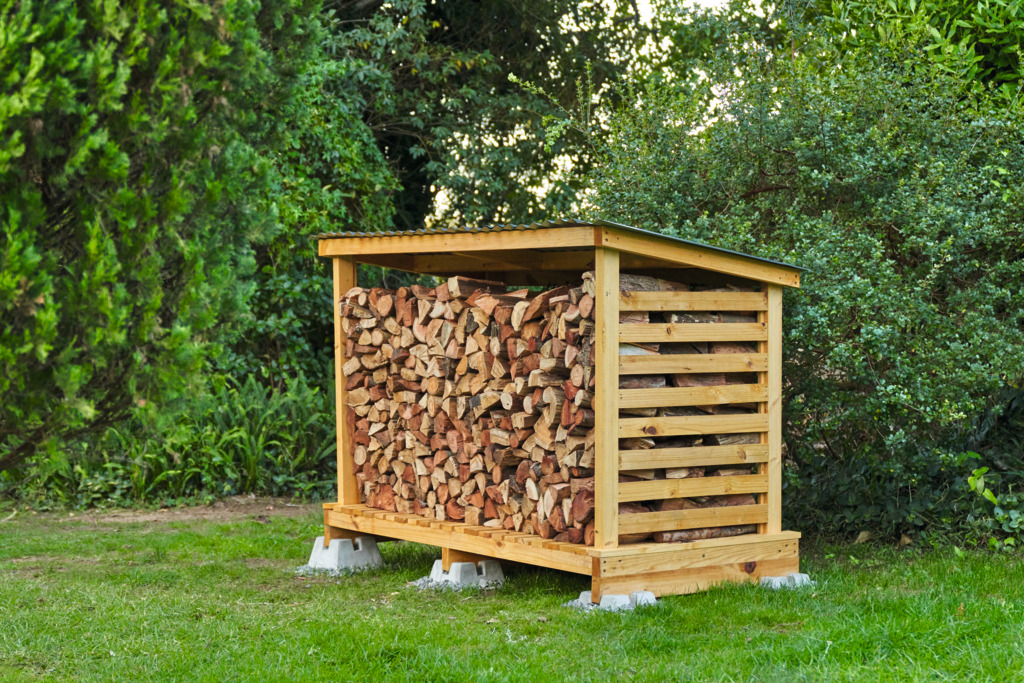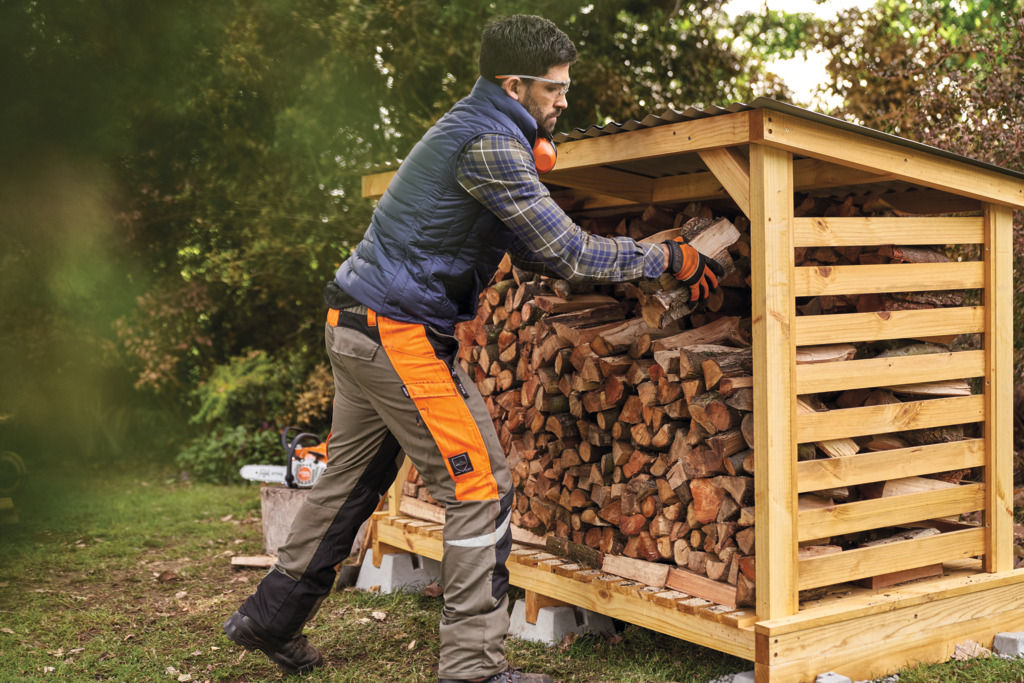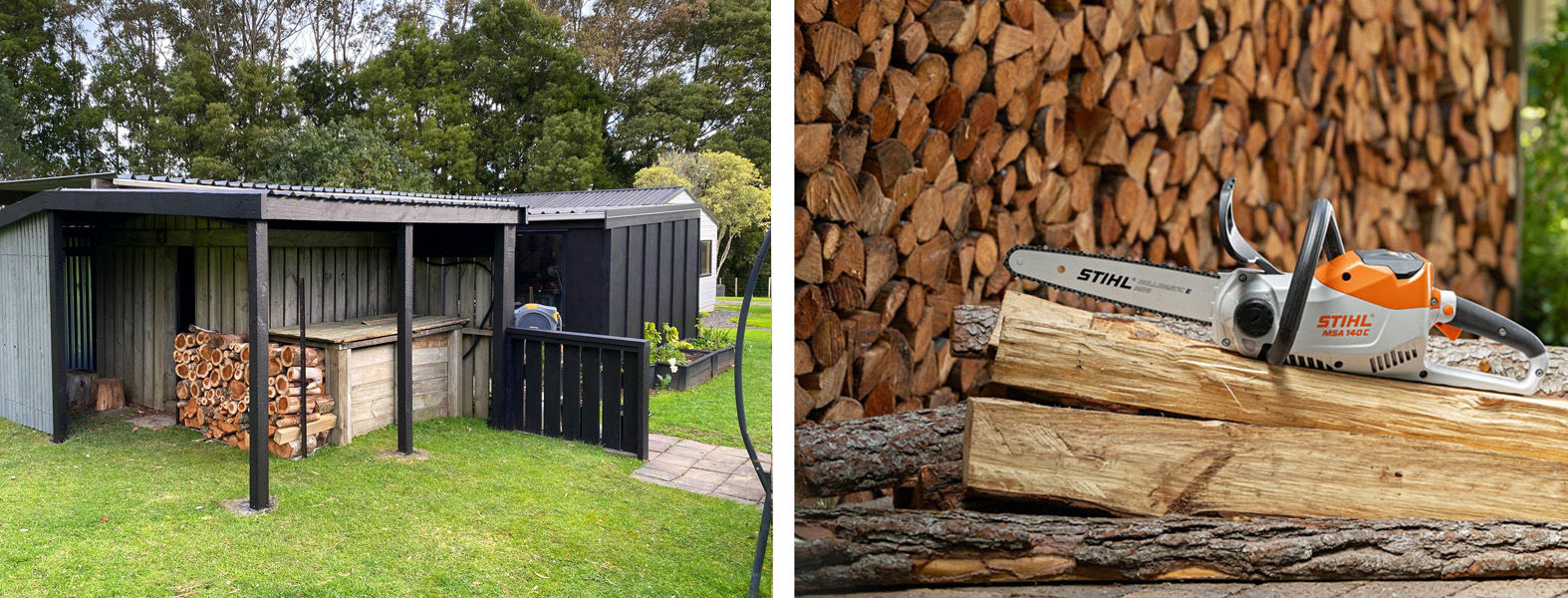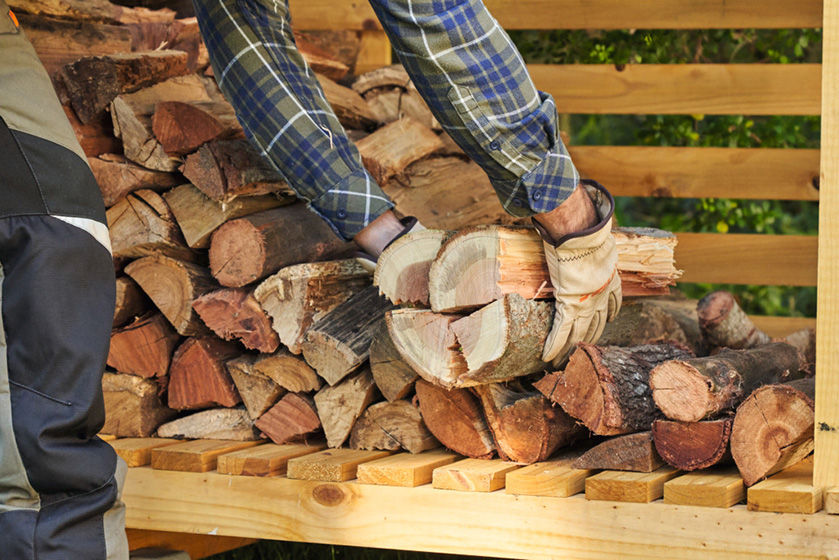How to Store Your Firewood

DRYING FIREWOOD
Aside from good wood that is cut and split to length, drying is the next most important step. For optimal burning, firewood should be dried, or “seasoned,” until its moisture content is less than 20 percent. Firewood with a moisture content higher than that may eventually burn, but it will be very hard to light and just as hard to keep burning. Thankfully the wood types and varieties that grow in the New Zealand climate typically have a faster dry time compared to other areas in the world. In many countries you need at least 2 years, in NZ we can typically can get away with less than 1 year dry time.

A good practice is to get your green wood cut up, split and stacked early in the summer (December), the wood is then usually dry enough for burning the following winter (June). That’s 5 to 6 months dry time. Dead wood can have an even shorter dry time.

FIREWOOD STORAGE

The woodshed has historically been an important part of the Kiwi home, it can come in any shape or size and can be constructed from anything imaginable. As long as it can fit the required amount of wood, while keeping the weather off and allow some air circulation, you have yourself a fine woodshed. A woodshed can also be substituted for a woodstack or drying stack. Typically a drying stack is a structure that allows you to stack the wood up high (without it all falling over), yet it has open sides and only a small roof to keep the direct rain off.
When deciding where to put your wood shed or stack, choose a sheltered location that is not too far from the house (long treks across the garden at night can be treacherous).

THE EASIEST FIREWOOD STORAGE SOLUTION
If you don’t fancy buying or building a storage shed for your firewood then the best way to protect it is with a Tarpaulin pinned over your pile. But before you hastily throw the tarp over it’s important that the wood is properly stacked. To start with, try and get it off the ground – so air can circulate underneath. A wooden palette makes a good base.
Just as you want air to circulate underneath the logs, you also need it to move through the whole pile. So stack your logs in an orderly and tidy manner (to avoid jenga-like collapses when you remove one) and make sure you allow gaps to naturally develop as you build, for ventilation. When it comes to covering, make sure the air can get into the pile by leaving gaps on all sides – cover just the top and keep the tarp secure by pinning it with ropes, like guide ropes on a tent.
THE PERFECT WOODSHED
If you’re planning on buying or building a wood shed, keep these points in mind. Air circulation is key, the sides and back should have gaps between the slats and the base should be raised from the ground. The roof, on the other hand, needs to keep water out so that must be solid and sloping away from the front of the shed.
By having an open front you’ll have easy access to stack to remove logs and provided the roof gives a good coverage your logs will be protected from all but the worst of the weather. If you’re concerned about horizontal rain then you could also fix a tarpaulin curtain, just make sure to leave it open as often as possible for air circulation.
STACKING YOUR FIREWOOD

Stacking the wood neatly not only looks good and saves space, it also allows for a more even airflow around the wood. A well-stacked firewood pile typically dries faster than a randomly dumped pile of wood on the floor of a shed. Ideally you should have your stack raised off the floor so air can circulate underneath the pile as well as from the sides and top. A well-stacked woodshed can fit nearly twice the volume of wood compared to a dumped pile of wood thrown into the same shed.

TIPS FOR STARTING A FIRE
-
Bring the wood you’re planning on burning into the house 24 hours before you use it. This will give it a final drying-off period away from the cool outside air and ensure your fire roars.
-
Don’t put too much wood in to start with. Sometimes less is more.
-
Use small pieces not large – the reason for this is many small pieces have a greater surface area than a few lager pieces. Heat and oxygen can act on the chemical properties of the wood faster, as it is easier to bring small pieces up to the required temperature than larger pieces.
-
Once the initial fire is started, progressively add larger pieces at a rate that allows the heat of the fire to work on the wood.
-
Don’t over-fuel the fire before there is enough heat to sustain the required draft. You want to make sure that the draft is working correctly so that the harmful gases and smoke from the fire will exit through the chimney.


